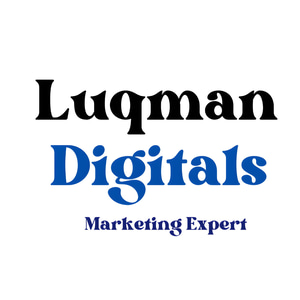Advertising On Meta, Google & Other Platforms
Advertising Guide for Businesses
Muhammad Luqman
8/25/20242 min read


Introduction
In today’s digital age, online advertising has become a crucial tool for businesses to reach their target audience. With platforms like Meta (which includes Facebook and Instagram), Google, and others, businesses have access to various options for promoting their products and services. Each platform offers unique features, making it essential for businesses to understand where to invest their advertising budget for maximum impact.
Advertising on Meta (Facebook & Instagram)
Meta's advertising platform is a powerhouse in the digital marketing world. With billions of active users, Facebook and Instagram offer unparalleled reach and targeting capabilities.
Advantages:
Targeting: Meta allows detailed audience segmentation based on demographics, interests, behaviors, and even specific actions users have taken on your website.
Engagement: With features like comments, likes, and shares, businesses can foster direct interaction with their audience.
Diverse Ad Formats: From carousel ads and stories to video ads and lead forms, Meta offers a variety of creative options to engage users.
Advertising on Google
Google Ads is a highly effective platform for businesses looking to capture users with intent. Whether they’re searching for a product or browsing their favorite websites, Google Ads can reach potential customers at various touchpoints.
Advantages:
Intent-Based Targeting: Google Ads can capture users actively searching for related keywords, ensuring high relevancy.
Versatility: Google offers several types of ads, including search ads, display ads, shopping ads, and YouTube video ads.
Analytics: With robust tracking and reporting, Google Ads provides detailed insights into campaign performance, allowing for continuous optimization.
Other Advertising Platforms
While Meta and Google are giants in digital advertising, other platforms can also be highly effective, depending on your target audience.
LinkedIn Ads: Ideal for B2B marketing, LinkedIn allows for precise targeting based on professional demographics like job title, industry, and company size.
Twitter Ads: Known for its real-time engagement, Twitter is great for promoting content and participating in trending conversations.
TikTok Ads: With its rapidly growing user base, TikTok offers innovative ad formats like branded challenges and in-feed videos, which are particularly effective for younger audiences.
Choosing the Right Platform for Your Business
Selecting the right platform depends on various factors, including your business goals, target audience, and budget. For example, if your goal is to capture leads from a professional audience, LinkedIn might be more effective than TikTok. Similarly, if you have a limited budget, focusing on platforms with lower cost-per-click (CPC) could be beneficial.
Conclusion
Each advertising platform offers unique benefits, and the best approach often involves a mix of platforms to maximize reach and engagement. By understanding the strengths of each, businesses can create a well-rounded advertising strategy that drives results.
If you need any help with advertising on Meta, Google, or other platforms, feel free to contact me for expert guidance.
